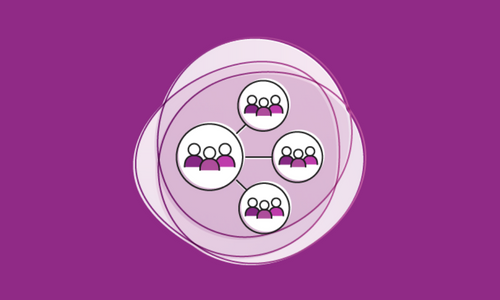How the mHealth Planning and Implementation Guide paves the way for the next generation of mHealth
[Originally posted on K4Health’s Blog & News here. Prior to becoming an Independent Consultant, Meredith Puleio DuBoff was IRH’s Program Officer for Global Leadership.]
It was January 2009 at Georgetown University’s Institute for Reproductive Health (IRH). We had just put the finishing touches on a concept note, detailing what at the time felt like a harebrained idea: women are increasingly using mobile phones, so why not use them as a family planning tool? Why couldn’t a method of family planning be available, right in the palm of women’s hands?
This idea would later become known as CycleTel™, and we would pioneer offering the Standard Days Method® (SDM) of family planning via text messages. In a matter of a few weeks, we had a script of the intended text messages and a formative research design under Institutional Review Board (IRB) review. We were excited and thought that CycleTel could really be a game changer for expanding access to family planning.
Since then, we have reached critical milestones: we have validated the concept through rigorous proof-of-concept testing, designed and built a customized software to support the service, integrated a call center to support customer queries, piloted the technology with more than 800 women, and developed a business plan to understand how to reach sustainability and scale in a five-year period. We’ve iterated the innovation, time and time again—adapting the messages too many times to count, tweaking the technology functionality to improve the user experience, and learning many times over that end users need to be involved at each stage of the development cycle to ensure adoption and continued use. We’ve also realized that it takes a community to be disruptive: we’ve participated in countless conferences and meetings, sharing and exchanging hard lessons with many mHealth colleagues, and we’ve benefited from the support of forward thinking investors who have provided the financial resources to introduce and operate CycleTel in India and elsewhere.
Now it is September 2013. CycleTel is well on its way to reaching its intended social impact—but it’s been a long and winding journey, and we have been creating the pathway as we go. There’s still more work to be done, more partnerships to be brokered, a business model to be validated, and the challenges of scale and sustainability to be met. While I no longer work on CycleTel as a full-time IRH employee, I’ve had the opportunity to be involved from the sidelines and see the innovation make strides this past year. 2014 will be a big year for CycleTel, and I’m looking forward to seeing what’s next.
I’m sharing this personal anecdote for two very important reasons:
- To underscore that mHealth is not necessarily easy and straightforward, and project timelines are not as overnight as we expect them to be, especially when dealing with technology and innovation; and
- If you’re new to mHealth planning and implementation, you’re in luck because you can learn from the mHealth pioneers. In the past five years, the field of mHealth has matured tremendously—and while there is much more to discover, there are also resources and knowledge to build on so you do not have to start with an empty whiteboard.
With that, K4Health and FHI 360 are proud to announce the beta launch of what we hope will be your companion as you start your next mHealth journey: The mHealth Planning and Implementation Guide: How to Integrate Mobile Technology into Health Programming. This Guide was designed to help global health practitioners and program planners understand mHealth, its application to health programs, and how to plan to integrate it into programs.
What does The mHealth Planning and Implementation Guide offer?
- Practical planning advice about how to approach integrating an mHealth initiative into a health program, from developing the concept, to designing the solution, and planning for implementation.
- Key considerations for each phase of the planning process, available as PDF downloads for ease of reference.
- Tips from global health and technology experts, based on their experiences with deploying and managing mHealth efforts.
- A comprehensive Resources section, where you will find—for the first time in one place—many of the key resources and networks for mHealth planning and implementation. The resources include:
- Networks, News, & Listservs;
- Communities of Practice, Discussions, & Debates;
- eLearning & Capacity Building;
- Project Repositories & Evidence Database;
- Technology & Content Repositories; and
- Publications. As an added feature, we created a matrix of 35+ publications according to the implementation topics that each cover—navigating among publications could not be easier!
- A Glossary of key terms, hyperlinked at first mention throughout the Guide, to help newcomers to either technology or global health cut through that jargon-y language.
Visit The mHealth Planning and Implementation Guide to get started on your first (or next) mHealth deployment today. We hope this Guide offers the information and tools needed to make informed decisions about mHealth planning and implementation—a luxury that many of us in the mHealth community did not have when navigating the field for the first time just a few short years ago.
We value your feedback! Please share your thoughts on the Guide by completing this survey. Your input will help inform the final version of the Guide, which will be available in December 2013.
 Where We Work
Where We Work  Press Room
Press Room  FACT Project
FACT Project  Passages Project
Passages Project  Learning Collaborative
Learning Collaborative  Search All Resources
Search All Resources  Social Norms
Social Norms  Fertility Awareness Methods
Fertility Awareness Methods